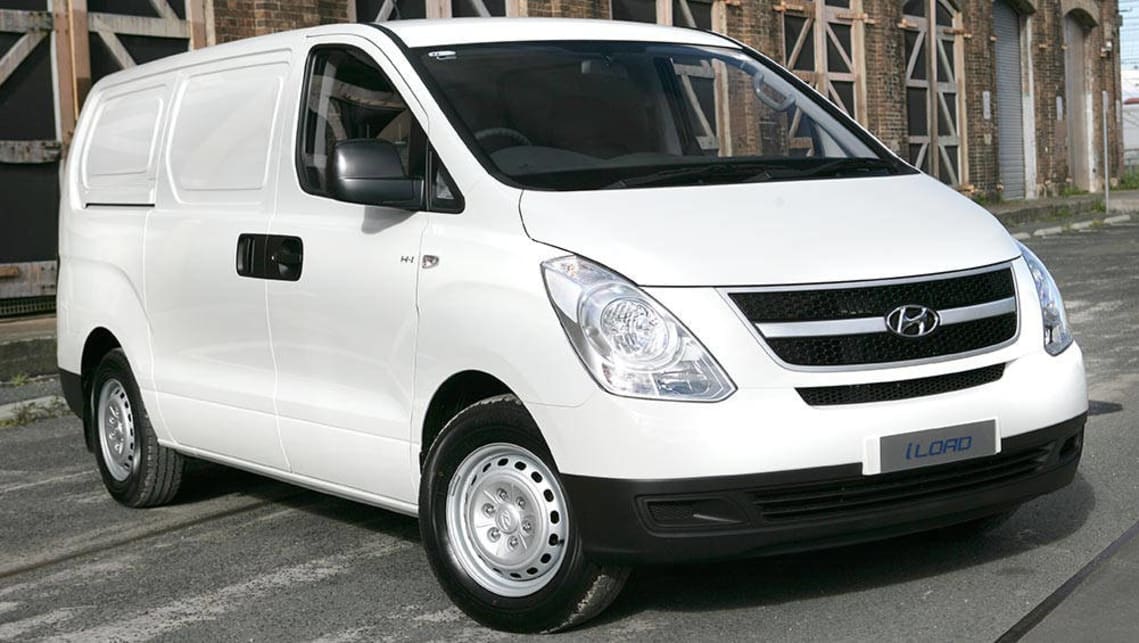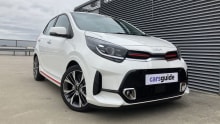
How much does it cost to replace a windscreen?
This used to be a simple question since most car windscreens were made from the...
Browse over 9,000 car reviews

In England, they are referred to as a race apart; a speed-obsessed, maniacal breed of dangerous lunatics known as "White Van Man".
Fortunately, in Australia we don't fear the people in commercial vehicles quite so much, although the forearms on blue-singlet-wearing truckies are intimidating - and we're used to being told, via the genius of bumper stickers, that Without Trucks, Australia Stops.
This educational missive often appears on vans too, although we're not sure you should trust a medium that also advises that Australia is "full".
They're used as everything from a worksite pack mule to a holiday camper or even a Mardi Gras float
If you're in the market for a commercial vehicle, chances are it won't stay confined to commercial duties. Like utes, which can do double duty as a work truck and family hauler, work vehicles are heavily specialised to the point of becoming a single-purpose tool.
Even so, in much the same way that every screwdriver is a chisel in disguise, they're used as everything from a worksite pack mule to a holiday camper or even a Mardi Gras float.
Put simply, commercial vehicles are built to suit the work they do. Just like wagons are great haulers and convertibles are a great way to get sunburnt, commercial vehicles are made to be as tough, and cheap, as nails.
The heavy-duty construction extends from nose to tail; you'll see hard-wearing plastics and fabrics in the cabin, ready to deal with hard-wearing tradies on a daily basis.
Body panels tend to be cheap to replace, reinforced, or both, such as the chunky face and side strips on the new Ford Transit (the vehicle most closely associated with White Van Man in the UK, and also the top choice for its bank robbers, apparently).
Light trucks, many of which can be driven on a car licence, are especially robust. Robustness, in fact, is their major selling point; from their engines and gearboxes to the basic construction of their frames, light trucks are sold on the basis of being practically invincible.
Because businesses try to keep their expenses down, commercial vehicles are geared to be as cheap to run and maintain as possible. While it might seem like couriers in ancient, smoke-billowing Mitsubishi Expresses and landscapers in equally flatulent Daihatsu Dynas don't follow the 'maintain' part of that scenario, they could, if they wanted to.
You'll find specialist variants to suit just about any intended use
They tend not to bother because commercial vehicles have another trick up their sleeve; even when beaten and run into the ground like an especially unloved donkey, they'll still keep trotting, long after common sense dictates. Cast your eye over the vehicles on offer from Wicked Campers, for instance, to see just how far you can make a dead horse run.
Should your payload involve actual carcasses, there'll be a commercial vehicle to suit. The whole point of these vehicles is to offer an amount of space that's appropriate to your hauling needs, be they crates, bales or movie sets.
That's why you'll find specialist variants to suit just about any intended use. Take, for instance, the roof. With no more than a tick on the order box, you can have one of regular height, a squat one or a tall one. It's the same with wheelbases; should you need a van that's as long as a Tolstoy novel, you can decide how far the front wheels should be from the rear ones, increasing or decreasing the load length in the process.
With light trucks, the customisation steps up another gear; you can spec any number of combinations of power, seating capacity and load capacity and not be even close to finished. Because each truck is basically a blank canvas, it's possible to mount anything from a regular tipper tray or cargo box to a crane or mobile dance platform.
Just like utes, the biggest problem of vans revolves around how they're made. Their construction can generally be summed up in one word, sadly, and that word is "cheap".
The Chinese LDV V80, one of the cheapest commercial vehicles in Australia, is also one of the most dangerous, with just a two-star ANCAP safety rating. And that's where the problems start. Businesses only succeed by keeping costs down and the LDV is a mere fraction of the cost of a more advisable Mercedes Vito, with its five-star ANCAP rating.
The fact that LDVs are starting to walk off the lot means Australian businesses might just be choosing profits over personal safety.
The LDV isn't alone, either, as the Suzuki APV micro van manages just three ANCAP stars, while the recently departed Mitsubishi Express failed to score more than one.
Don't expect five-star ratings from the more recognisable players, either; there are only four ANCAP stars on offer from the Toyota HiAce, Hyundai iLoad and Volkswagen's Transporter.
It gets worse when it comes to light trucks; stability control, which has been mandatory for passenger cars since 2013, isn't compulsory for trucks until November 2017.
If there's any comfort to be found, it certainly won't be in a commercial vehicle's cabin. In cheaper and even mid-range options, expect a sea of hard, grey plastic and a seat that's as suited to long distances as a snail.
To be fair, newer models like the Ford Transit and Mercedes Vito have improved, lifting the game considerably from just a few years ago, with each sporting comfortable and modern interiors. They're still geared towards robustness, however.
Low-rent stereo and air-conditioning systems also take the place of touchscreen media and climate control. Isuzu and Hino trucks have started throwing in Bluetooth-enabled media systems to make their cabins a less dreary place to sit; whether it's enough to offset their mundane, featureless dashboards is another story.
The phrase 'it drives like a truck' was never meant as a compliment
Out on the open road, commercial vehicles behave poorly, especially if you're used to modern machines. Throw out all the knowledge you've stored about how cars brake, steer and ride; it's all useless when applied to the task of wheeling a commercial vehicle around.
Light trucks are the most obvious examples – the phrase 'it drives like a truck' was never meant as a compliment – but it's important to note that vans, and ladder-framed utes, are miles away from a decent drive.
This goes back to their cheap construction; unless you're aiming at the pointy end of the van market, don't expect car-like capability. Don't expect it at all from a light truck.
Much like a good suit, commercial vehicles are made-to-measure.
In every other aspect, however, they're more like an off-the-rack affair, made of polyester and on the rack at Lowes – ugly, uncomfortable and the opposite of stylish, but cheap.
Old-school tech, low-rent interiors and an absence of concessions to comfort may make for a coarse and unpleasant driving experience, but the real split in the seam is the appalling safety standards.
Unfortunately, if you've got a job to do, you just have to pick the 'least awful' option; or the safest you can afford.
Or you could always hire a White Van Man to do the job for you.
Why SUVs are becoming so popular
Why sedans are still the most popular car bodystyle
Why a hatchback is the smartest car you can buy
Why a wagon is worth considering over an SUV
Why people buy coupes even though they're not perfect
Why should I buy a convertible?
Utes are the most versatile car on the road but should I buy one?










Comments